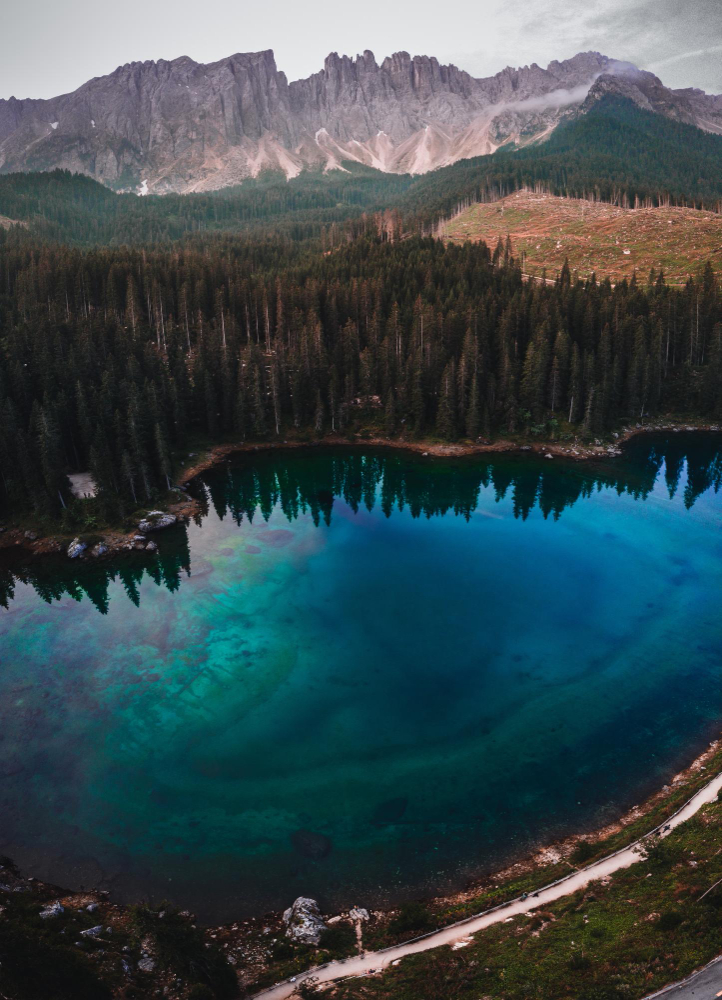The Best Times of Year to Hike the Tongariro Crossing: Seasonal Pros and Cons

Hiking the Tongariro Crossing in New Zealand is a popular adventure for outdoor enthusiasts, offering stunning views of volcanic landscapes and emerald lakes.
The best times of year to tackle this challenging trek depend on the season, each one presenting its own set of pros and cons.
During the summer months of December to February, hikers can enjoy warmer weather and longer daylight hours, making it ideal for those who prefer mild conditions.
However, this is also the busiest time on the trail, with larger crowds and higher accommodation prices.
In contrast, the shoulder seasons of spring (September to November) and autumn (March to May) offer more moderate temperatures and fewer people on the trail, providing a more peaceful and immersive experience in nature.
While the weather can be unpredictable during these times, with the possibility of sudden storms and cooler temperatures, hikers can still enjoy the changing colours of the landscape without the crowds.
In the upcoming sections, we will delve deeper into the seasonal pros and cons of hiking the Tongariro Crossing, highlighting key takeaways that will help you plan your next adventure wisely.
- The best times to hike the Tongariro Crossing are during the summer months of December to February, as the weather is warmer and more stable, allowing for clear views of the stunning landscape.
- Hiking in the shoulder seasons of spring (September to November) and autumn (March to May) can also be a great option, as the crowds are smaller and the weather is still relatively mild, but hikers should be prepared for more unpredictable weather conditions.
- Winter (June to August) is not recommended for hiking the Tongariro Crossing due to the harsh weather conditions, including snow and ice that can make the track dangerous and impassable.
- Regardless of the season, it is important to be well-prepared for any weather conditions when hiking the Tongariro Crossing, as the weather can change quickly and hikers must be equipped with appropriate clothing and gear.
- Overall, the best time to hike the Tongariro Crossing will depend on individual preferences and priorities – whether it be fewer crowds, better weather, or unique seasonal experiences – so hikers should carefully consider the pros and cons of each season before planning their trip.
Which Seasons Offer the Best Hiking Experience on the Tongariro Crossing?
Summer: Pros and Cons
Summer is the most popular time to hike the Tongariro Crossing due to the warm weather and longer daylight hours.
However, this also means larger crowds on the trail, especially during peak tourist season. Be prepared for crowded conditions at popular sites and accommodations.
Autumn: Pros and Cons
Autumn offers cooler temperatures and stunning fall foliage along the trail. The crowds have thinned out compared to summer, making for a more peaceful hiking experience.
However, be aware that weather can be unpredictable in autumn, with a higher chance of rain and fog.
Winter: Pros and Cons
Winter on the Tongariro Crossing is a magical experience with snow-covered landscapes and fewer hikers on the trail.
The trail can be more challenging in winter due to ice and snow, so it’s essential to be well-prepared with the right gear and clothing.
Winter hiking also means shorter daylight hours, so plan your hike accordingly.
Spring: Pros and Cons
Spring brings new life to the Tongariro Crossing with blooming wildflowers and melting snow. The trail is less crowded than in summer but still offers pleasant weather for hiking.
However, be aware that spring weather can be unpredictable, so be prepared for sudden changes and potential closures due to weather conditions.
What are Some Tips for Hiking the Tongariro Crossing?
- Check the weather forecast before heading out on the trail.
- Start your hike early in the day to avoid crowds and allow plenty of time to complete the trek.
- Stay on designated trails to protect the fragile alpine environment.
- Bring plenty of water, snacks, and layers of clothing for changing weather conditions.
- Be prepared for all seasons, even in the summer months.
FAQs
Is it safe to hike the Tongariro Crossing in the winter?
While winter can offer stunning views with snow-covered landscapes, it is important to note that the Tongariro Crossing can become dangerous during this time due to icy conditions and extreme weather.
It is recommended to hike with a guide and be properly prepared with appropriate gear.
Are there specific months that are better for hiking the Tongariro Crossing?
The best months for hiking the Tongariro Crossing are typically during the summer season, from December to February, when the weather is more predictable and the days are longer.
However, shoulder seasons like spring and autumn can also be great options with fewer crowds.
What are the pros of hiking the Tongariro Crossing in the summer?
Summer offers longer daylight hours, warmer temperatures, and more stable weather conditions, making it ideal for hiking the Tongariro Crossing.
Additionally, the volcanic landscapes are even more vibrant during this time of the year.
Are there any cons to hiking the Tongariro Crossing in the summer?
The main downside of hiking in the summer is the higher number of tourists, which can make the trail more crowded.
It is important to start early to avoid the crowds and have a more enjoyable experience.
Is the Tongariro Crossing closed during certain times of the year?
While the Tongariro Crossing is open year-round, certain sections of the trail may be closed during severe weather conditions or volcanic activity.
It is important to check the official website for updates and alerts before embarking on your hike.
What should I pack for a hike on the Tongariro Crossing?
It is essential to pack plenty of water, food, appropriate clothing layers, sturdy footwear, a map, a first aid kit, and sunscreen.
Be prepared for changing weather conditions and make sure to leave no trace by carrying out your trash.
Can I hike the Tongariro Crossing without a guide?
While it is not mandatory to have a guide to hike the Tongariro Crossing, it is highly recommended, especially for inexperienced hikers or during winter conditions.
Guides can provide valuable knowledge about the area and ensure your safety throughout the hike.
What wildlife can be encountered while hiking the Tongariro Crossing?
The Tongariro Crossing is home to various bird species like the Kea parrot and the North Island robin.
Hikers may also spot native plants like the Mount Cook Lily and the Red Tussock grass. However, it is important to respect the wildlife and environment by observing from a distance.
Are there accommodation options near the Tongariro Crossing?
There are various accommodation options near the Tongariro Crossing, including campsites, lodges, and motels in nearby towns like National Park Village and Whakapapa Village.
It is recommended to book in advance, especially during the peak season.
Can I hike the Tongariro Crossing with children?
While the Tongariro Crossing is a challenging hike with steep climbs and uneven terrain, it is possible to hike with older children who are physically fit and experienced in hiking.
It is important to assess the capabilities of your children and be prepared with proper gear and supplies.
Conclusion
Choosing the best time of year to hike the Tongariro Crossing will ultimately depend on your preferences and hiking experience.
While summer may offer more favourable conditions, shoulder seasons can provide a quieter and more peaceful experience on the trail.
It is important to plan ahead, be prepared for changing weather conditions, and respect the nature and wildlife of this unique volcanic landscape.
Whether you are seeking a challenging adventure or a leisurely stroll through breathtaking scenery, the Tongariro Crossing offers something for every hiker.
By considering the seasonal pros and cons, you can make the most of your experience and create lasting memories on this iconic New Zealand hike.
